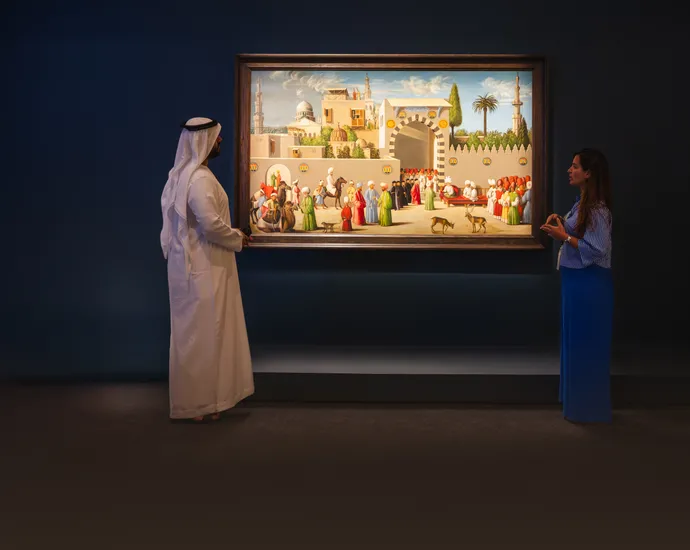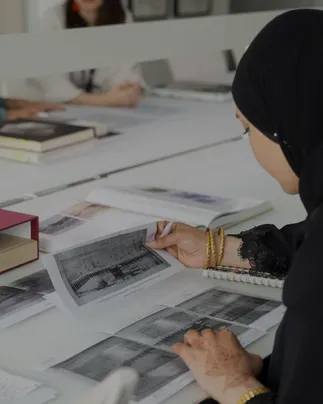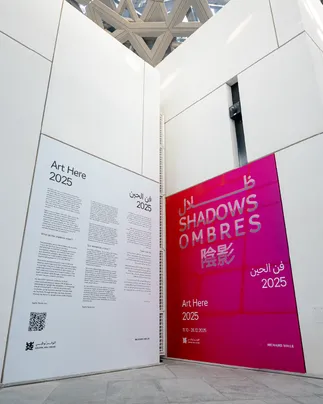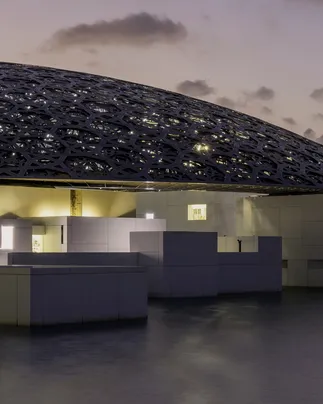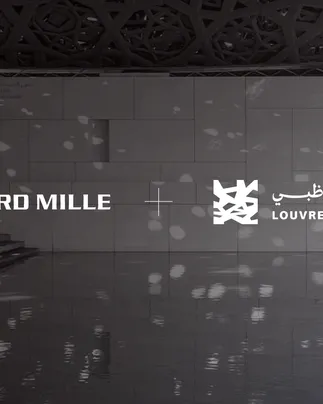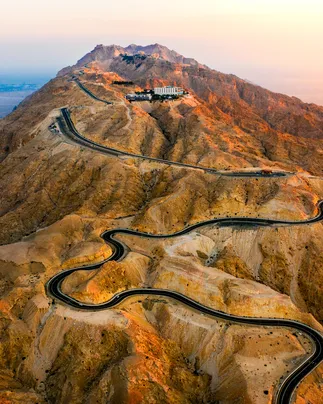Louvre Abu Dhabi has inaugurated the Mamluks: Legacy of an Empire exhibition, which delves into the rich heritage of the Mamluk Sultanate, a dynasty that ruled a vast expanse of territory encompassing the most significant Islamic holy sites for over two and a half centuries (1250–1517). Showcasing the rich productions of the Mamluk society, the exhibition brings together more than 270 exceptional artworks from 34 museums and cultural institutions in 13 countries, including objects of art, glasswork, metalwork, ceramics, textiles, coinage, manuscripts and other items.
Organised by Louvre Abu Dhabi in partnership with Musée du Louvre and France Muséums, with the support of LG Electronics Gulf as sponsor and Abu Dhabi Media Network as media partner, this exhibition is the first on the subject of the Mamluk Sultanate to be showcased in the GCC region. It is open to the public from 17 September 2025 to 25 January 2026.
Mamluks: Legacy of an Empire is curated by Dr. Souraya Noujaim, Director of the Department of Islamic Art at Musée du Louvre (General Curator) and Dr. Carine Juvin, Curator for the Medieval Near East Collection, Department of Islamic Art, at Musée du Louvre (Scientific Curator), with the support of Fakhera Alkindi, Senior Curatorial Assistant at Louvre Abu Dhabi.
Manuel Rabaté, Director of Louvre Abu Dhabi, said: “We are proud to present Mamluks: Legacy of an Empire, which celebrates the cultural and artistic achievements of one of the Islamic world’s most influential dynasties. This exhibition delves into the interactions of the Mamluk Sultanate with Asia, Africa and Europe, revealing how interconnected the world was at that time, and how remarkably aligned in spirit it was with the cosmopolitan nature of contemporary Abu Dhabi. We are grateful for our partners, lenders and sponsors, whose collaboration helped us bring history to life and deepen cultural connections across borders.”
The exhibition was first presented at the Musée du Louvre in Paris in spring 2025, as the first major European showcase dedicated to the Mamluk Sultanate. Within the collection of the Musée du Louvre’s Department of Islamic Art, which showcases the diversity of artistic production across the Islamic world from the 7th century to the early 20th century, the group of Mamluk artworks ranks among the finest in the world. Now presented for audiences in the UAE and the GCC, the exhibition’s curatorial direction highlights the region’s historical and cultural connections to the Mamluk world, with an expanded selection of artworks from regional collections on view exclusively in Abu Dhabi, alongside a few displayed in both Abu Dhabi and Paris.
Laurence des Cars, President-Director of the Musée du Louvre, Paris, said: "The exhibition Mamluks: Legacy of an Empire at Louvre Abu Dhabi is a remarkable testament to the strength and vitality of the partnership between our two institutions. I am very pleased that, on this occasion, several masterpieces from the Louvre are presented alongside outstanding loans from around the world. The dialogues established between these works will, I hope, allow Louvre Abu Dhabi’s visitors to fully appreciate the richness of this culture’s artistic and intellectual diversity, which shaped the Near East from the mid-13th to the early 16th century.”
The exhibition curators, Dr Souraya Noujaim and Dr Carine Juvin, said: “This exhibition offers a unique opportunity to present, for the first time in both Europe and the Middle East, the remarkable history of the Mamluk sultans and their cultural and artistic achievements, brought together through exceptional international loans. We are especially pleased to highlight themes from recent research into Mamluk society, including the role of women, religious minorities, and the empire’s extensive diplomatic and trade networks spanning Asia, Africa and Europe. We also felt it was essential to convey the power and sophistication of Mamluk art, a form of artistic expression that remains strikingly modern.”
Dr Guilhem André, Director for Scientific, Curatorial and Collections Management at Louvre Abu Dhabi, said: “Thanks to Louvre Abu Dhabi’s close relationship with the Musée du Louvre, and given the size and quality of its collections, along with the extensive research on this period carried out in France since the nineteenth century, the framework for this exhibition quickly took shape. Both museums worked closely on the project, and several masterpieces of Mamluk art from Louvre Abu Dhabi’s collection are among the works displayed at both venues of this touring exhibition.”
The exhibition unfolds across seven thematic sections exploring the structure and influence of the Mamluk dynasty. Highlights of the works on loan from Musée du Louvre include a Key to the Kaaba, bearing the name of Sultan Faraj (r. 1399 – 1412); a helmet bearing the name of Sultan Barsbay (r. 1422 – 1438); and a Venetian School painting titled Venetian Diplomatic Mission Received by the Governor of Damascus (1511). Another notable loan is the Basin known as the Baptistery of Saint Louis (c. 1330 – 1340), a masterpiece of engraved and inlaid metalwork that, over the centuries, has become a symbolic object of French royalty and history. This piece is being presented in the region for the very first time.
Six artworks from Louvre Abu Dhabi’s collection are showcased including a Juz’ Amma, thirtieth section of the Holy Quran (second half of the 13th century), a rare carpet decorated with three medallions produced in Egypt (second half of the 15th century), and a pharmaceutical or perfumes Albarello with coat of arms decoration (15th century).
Other notable loans include a Certificate of pilgrimage (Hajj) delivered to Maymuna, daughter of Muhammad al-Zardili (1433) from the British Library; an incense burner bearing the name of Sultan al-Nasir Muhammad ibn Qalawun (c. 1330 – 1341) from the Museum of Islamic Art in Doha; and a Mosque Lamp bearing the name of Emir Qawsun (c. 1330-1335) from the Metropolitan Museum of Art in New York.
With the support of LG Electronics Gulf, the exhibition integrates digital storytelling and multimedia elements. Five interactive screens, spread throughout the exhibition, invite visitors to delve deeper into the stories behind the artworks, enriching their experience through immersive sound and visuals.
A rich cultural and educational programme will accompany Mamluks: Legacy of an Empire, offering a diverse array of events. Between September and November, three talks exploring different aspects of the Mamluk era will take place: a public conversation with the exhibition’s curators on September 16, a lecture on Mamluk architecture on November 19, and a talk focusing on a prominent historical figure who lived during the Mamluk period. In addition, a film related to the Mamluks history will be screened during the exhibition.
The museum will also host a variety of educational activities for adults, families and youth. Highlights include a specially designed children’s path wall labels for students and children, enabling them to discover the exhibition through questions and fun facts. The museum’s ongoing programmes, such as Drawing at the Museum and Book an Easel, will feature sessions dedicated to the Mamluks, alongside specially curated guided tours.
A recorded podcast on the exhibition will be available via Louvre Abu Dhabi’s website and mobile application, allowing the public to explore its themes from anywhere. The Mamluks: Legacy of an Empire exhibition catalogue is available in Arabic, English and French at the museum boutique. Edited by the exhibition’s scientific curator, Dr Carine Juvin, the catalogue features contributions from leading international specialists and serves as an accessible reference on the art and culture of the Mamluk Sultanate.


